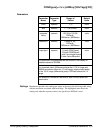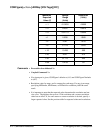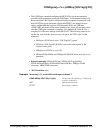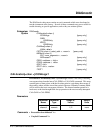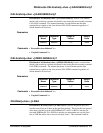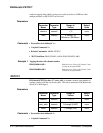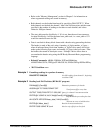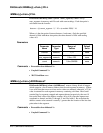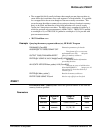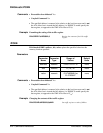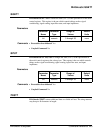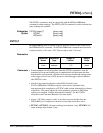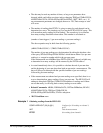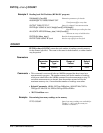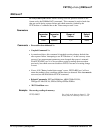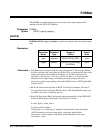
• The wrapped bit (bit 0) usually indicates that enough pre-arm data was taken to
cause data to be overwritten, since each segment is a circular buffer. It is possible
for a wrapped bit to be set even though no data was actually overwritten. This
occurs because the address counter always points to the next location in memory
that is to be filled, and therefore a false wrap indication will occur if exactly
"buffer size" data points were taken. The buffer size is a number divisable by 4
which for post-arm only measurements is ARM:COUN * TRIG:COUN (padded
to a multiple of 4), or TRIG:COUN (padded to a multiple of 4) for pre-arm with
post-arm measurements.
• *RST Condition: none
Example Querying the memory segment address(es), HP BASIC Program
DIM Ndig$[1],Count$[9] Dimension parameters for header
ASSIGN @X TO 70905;FORMAT OFF
Turn format off so we can enter
unformatted bytes with this path
OUTPUT 70905;"DIAG:MEM:ADDR?" Query for memory addresses
ENTER @X USING "#,X,K,K";Ndig$;Count$[1;VAL(Ndig$)]
Obtain the header information
preceeding the data
ALLOCATE INTEGER Mem_addrs(1:VAL(Count$)/2)
Allocate an array to hold the data.
Note that HP BASIC’s integers are 16
bits and not 32, hence the divide by 2
instead of by 4
ENTER @X;Mem_addrs(*) Read in the memory addresses
ENTER 70905 USING "B";Junk Need to strip off left over line feed
:PEEK?
DIAGnostic:PEEK? <address, bits> shows the specified number of bits from the
memory location specified.
Parameters
Parameter
Name
Parameter
Type
Range of
Values
Default
Units
address
numeric 0 thru FFFFFF
16
none
bits
numeric 8 | 16 | 32 none
DIAGnostic:PEEK?
DIAGnostic Subsystem Command Reference 221



